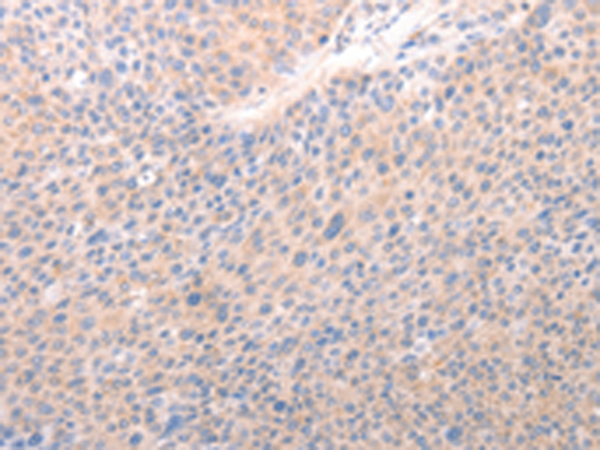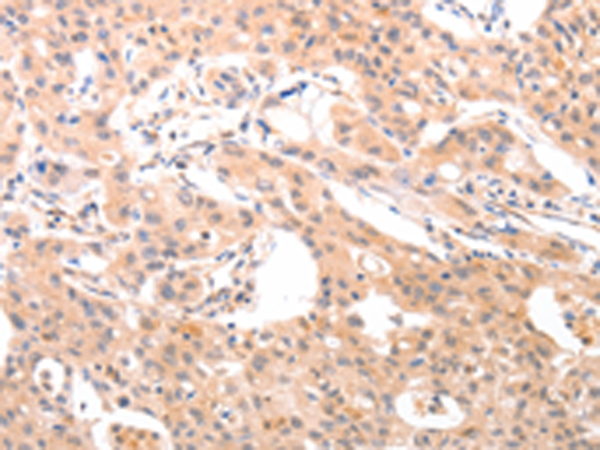

| WB | 咨询技术 | Human,Mouse,Rat |
| IF | 咨询技术 | Human,Mouse,Rat |
| IHC | 咨询技术 | Human,Mouse,Rat |
| ICC | 技术咨询 | Human,Mouse,Rat |
| FCM | 咨询技术 | Human,Mouse,Rat |
| Elisa | 咨询技术 | Human,Mouse,Rat |
| Aliases | IRP1; ACONS; IREB1; IREBP; IREBP1 |
| Host/Isotype | Rabbit IgG |
| Antibody Type | Primary antibody |
| Storage | Store at 4°C short term. Aliquot and store at -20°C long term. Avoid freeze/thaw cycles. |
| Species Reactivity | Human, Mouse, Rat |
| Immunogen | Synthetic peptide of human ACO1 |
| Formulation | Purified antibody in PBS with 0.05% sodium azide and 50% glycerol. |
+ +
以下是关于FNDC5抗体的3篇参考文献及其摘要概括:
---
1. **"Irisin and FNDC5 in retrospect: An exercise-induced adipo-myokine with therapeutic potential"**
*Authors: Boström P, et al. (2012)*
**摘要**:该研究首次发现FNDC5蛋白及其剪切产物鸢尾素(Irisin),证明其在运动后通过激活褐色脂肪代谢改善代谢健康。文中使用FNDC5特异性抗体验证了其在肌肉和脂肪组织中的表达,并证实抗体在动物模型中的检测可靠性。
2. **"Detection and quantitation of circulating human irisin by tandem mass spectrometry"**
*Authors: Jedrychowski MP, et al. (2015)*
**摘要**:本文开发了一种基于质谱的FNDC5/Irisin定量方法,并通过商业抗体验证其特异性。研究发现部分市售抗体存在交叉反应,强调了抗体验证在FNDC5研究中的重要性,为后续实验提供质量控制参考。
3. **"FNDC5/Irisin is differentially expressed in adipose tissue stromal vascular fraction and mature adipocytes"**
*Authors: Peng J, et al. (2017)*
**摘要**:研究利用FNDC5抗体进行免疫组化和Western blot分析,发现FNDC5在脂肪组织基质细胞中的表达显著高于成熟脂肪细胞,提示其可能通过旁分泌机制调控脂肪代谢,抗体特异性通过siRNA敲低实验验证。
---
**备注**:以上文献均聚焦FNDC5抗体的应用,涵盖发现、验证及功能研究。建议通过PubMed或Web of Science输入标题查询原文细节。
FNDC5 (fibronectin type III domain-containing protein 5) is a transmembrane protein primarily expressed in skeletal muscle and adipose tissue. It gained attention due to its cleavage product, irisin, a myokine released during exercise. Irisin is proposed to stimulate adipose tissue "browning," enhancing energy expenditure and metabolic health. FNDC5 antibodies are critical tools for detecting and quantifying FNDC5/irisin in research, aiding studies on metabolism, obesity, and diabetes.
These antibodies are typically developed in host species (e.g., rabbits, mice) using immunogenic peptide sequences from FNDC5. Polyclonal antibodies recognize multiple epitopes, while monoclonal antibodies target specific domains, offering higher specificity. Validation methods include Western blotting, immunohistochemistry, and ELISA to confirm binding to native or recombinant FNDC5. Challenges include distinguishing full-length FNDC5 (≈25 kDa) from processed irisin (≈12 kDa) and addressing cross-reactivity with unrelated proteins.
Research applications focus on FNDC5's role in metabolic regulation, neurodegenerative diseases (e.g., Alzheimer’s), and muscle-liver crosstalk. Commercial antibodies vary in performance, necessitating rigorous validation. Recent debates about irisin's physiological relevance in humans highlight the importance of reliable FNDC5 antibodies to clarify its biological functions and therapeutic potential.
×